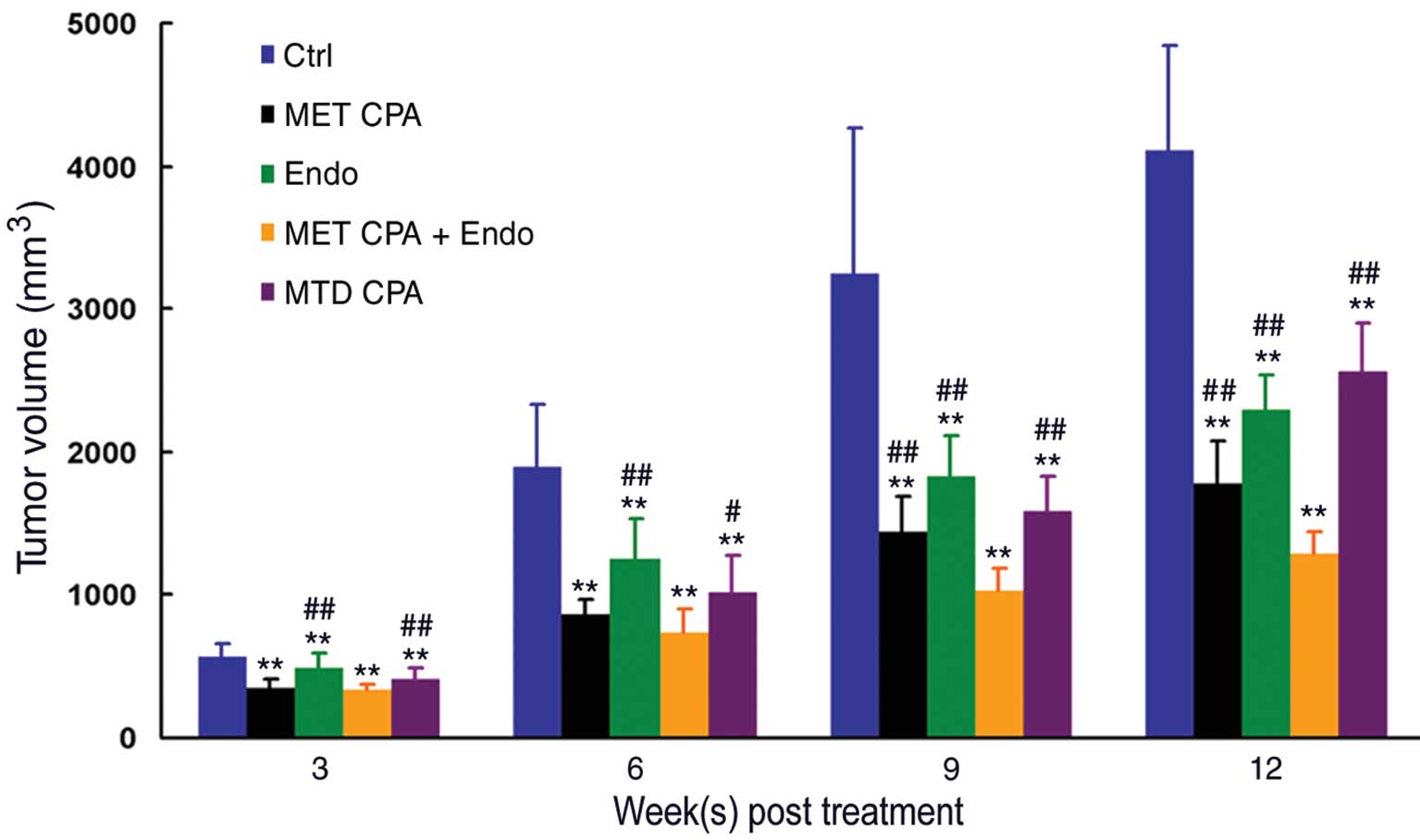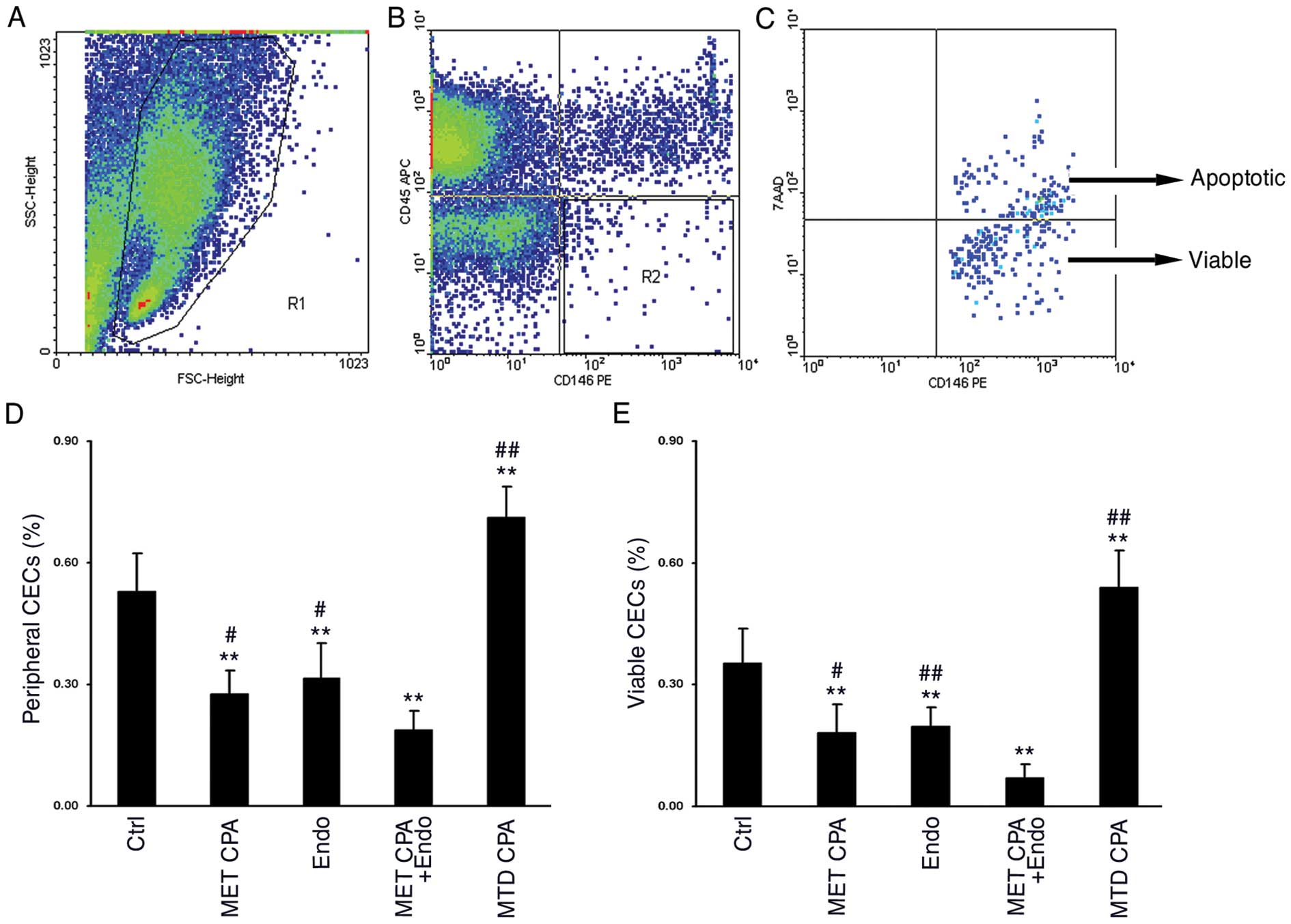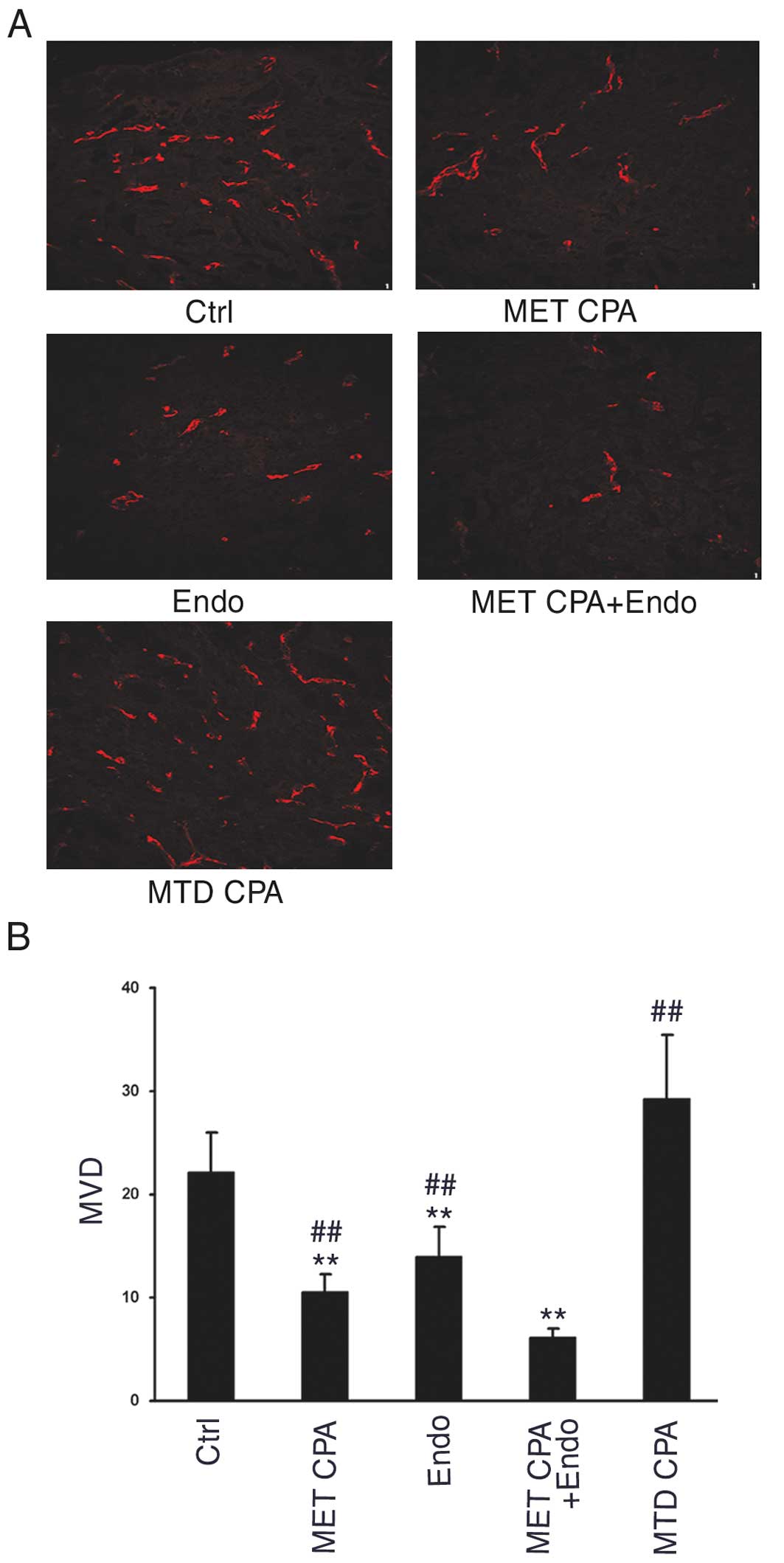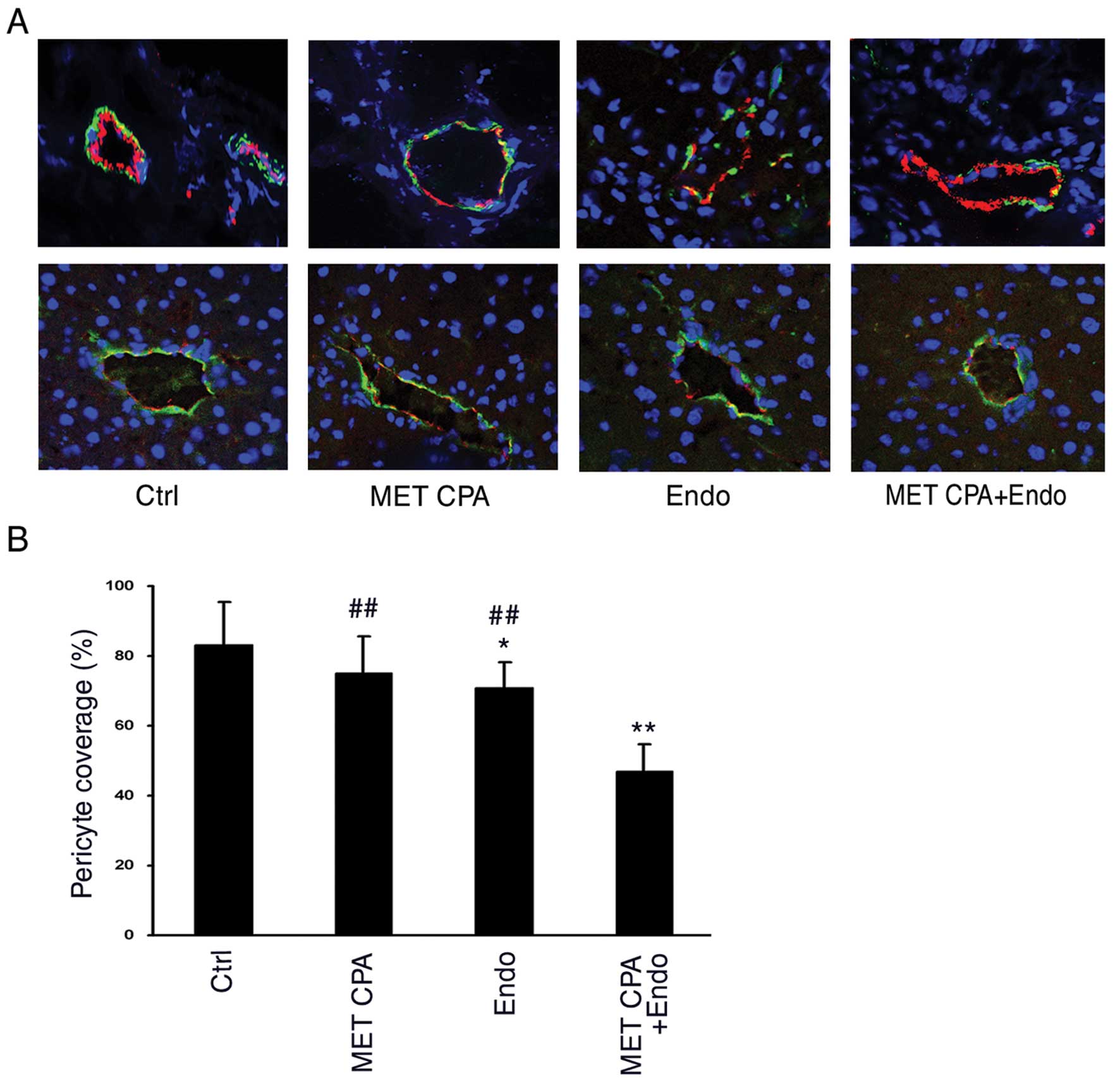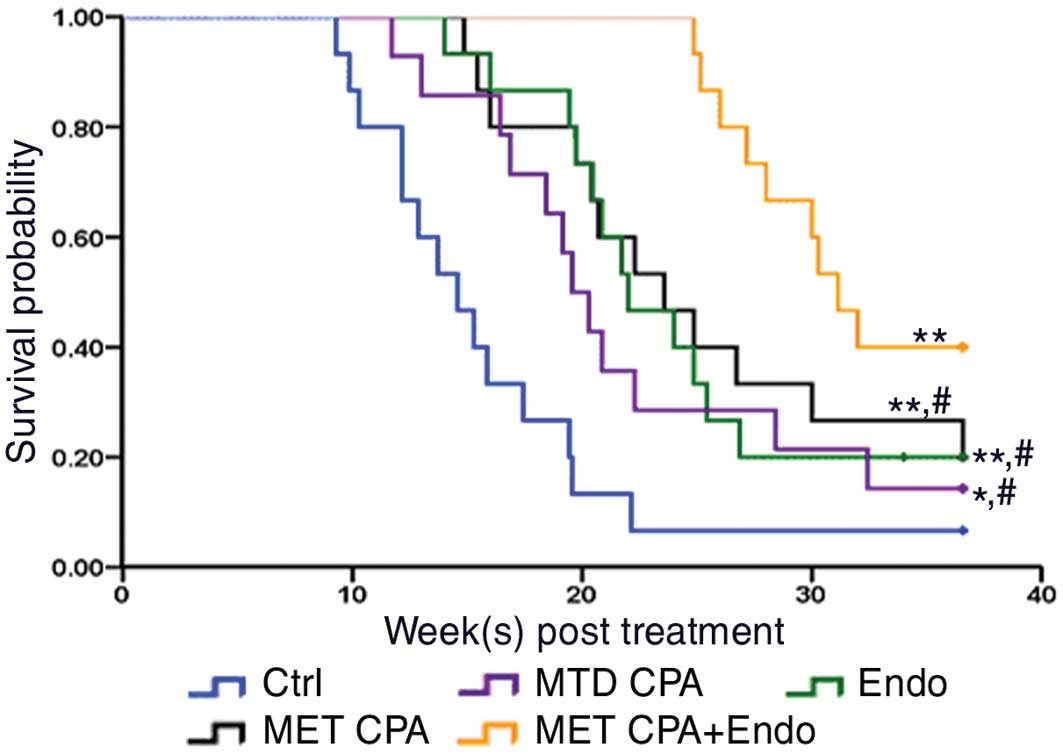|
1
|
Jemal A, Bray F, Center MM, Ferlay J, Ward
E and Forman D: Global cancer statistics. CA Cancer J Clin.
61:69–90. 2011. View Article : Google Scholar
|
|
2
|
Parkin DM, Bray F, Ferlay J and Pisani P:
Global cancer statistics, 2002. CA Cancer J Clin. 55:74–108. 2005.
View Article : Google Scholar
|
|
3
|
Goffin J, Lacchetti C, Ellis PM, Ung YC
and Evans WK: First-line systemic chemotherapy in the treatment of
advanced non-small cell lung cancer: a systematic review. J Thorac
Oncol. 5:260–274. 2010. View Article : Google Scholar : PubMed/NCBI
|
|
4
|
Felip E, Cedrés S, Checa E and Martinez P:
How to integrate current knowledge in selecting patients for first
line in NSCLC? Ann Oncol. 21(Suppl 7): 230–233. 2010. View Article : Google Scholar : PubMed/NCBI
|
|
5
|
Thatcher N and Heighway J: Maintenance and
consolidation therapy in patients with unresectable stage III/IV
non-small cell lung cancer. Oncologist. 15:1034–1042. 2010.
View Article : Google Scholar : PubMed/NCBI
|
|
6
|
Kerbel RS and Kamen BA: The
anti-angiogenic basis of metronomic chemotherapy. Nat Rev Cancer.
4:423–436. 2004. View
Article : Google Scholar : PubMed/NCBI
|
|
7
|
Pasquier E, Kavallaris M and Andre N:
Metronomic chemotherapy: new rationale for new directions. Nat Rev
Clin Oncol. 7:455–465. 2010. View Article : Google Scholar : PubMed/NCBI
|
|
8
|
Man S, Bocci G, Francia G, Green SK, Jothy
S, Hanahan D, Bohlen P, Hicklin DJ, Bergers G and Kerbel RS:
Antitumor effects in mice of low-dose (metronomic) cyclophosphamide
administered continuously through the drinking water. Cancer Res.
62:2731–2735. 2002.PubMed/NCBI
|
|
9
|
Kong DS, Lee JI, Kim WS, Son MJ, Lim do H,
Kim ST, Park K, Kim JH, Eoh W and Nam DH: A pilot study of
metronomic temozolomide treatment in patients with recurrent
temozolomide-refractory glioblastoma. Oncol Rep. 16:1117–1121.
2006.PubMed/NCBI
|
|
10
|
Song HF, Liu XW, Zhang HN, Zhu BZ, Yuan
SJ, Liu SY and Tang ZM: Pharmacokinetics of His-tag recombinant
human endostatin in Rhesus monkeys. Acta Pharmacol Sin. 26:124–128.
2005. View Article : Google Scholar : PubMed/NCBI
|
|
11
|
Jia H and Kling J: China offers
alternative gateway for experimental drugs. Nat Biotechnol.
24:117–118. 2006. View Article : Google Scholar : PubMed/NCBI
|
|
12
|
Pietras K and Hanahan D: A multitargeted,
metronomic, and maximum-tolerated dose ‘chemo-switch’ regimen is
antiangiogenic, producing objective responses and survival benefit
in a mouse model of cancer. J Clin Oncol. 23:939–952. 2005.
|
|
13
|
Bertolini F, Paul S, Mancuso P,
Monestiroli S, Gobbi A, Shaked Y and Kerbel RS: Maximum tolerable
dose and low-dose metronomic chemotherapy have opposite effects on
the mobilization and viability of circulating endothelial
progenitor cells. Cancer Res. 63:4342–4346. 2003.PubMed/NCBI
|
|
14
|
Goon PK, Lip GY, Stonelake PS and Blann
AD: Circulating endothelial cells and circulating progenitor cells
in breast cancer: relationship to endothelial
damage/dysfunction/apoptosis, clinicopathologic factors, and the
Nottingham Prognostic Index. Neoplasia. 11:771–779. 2009.
|
|
15
|
Goon PK, Lip GY, Boos CJ, Stonelake PS and
Blann AD: Circulating endothelial cells, endothelial progenitor
cells, and endothelial microparticles in cancer. Neoplasia.
8:79–88. 2006. View Article : Google Scholar : PubMed/NCBI
|
|
16
|
Mancuso P, Calleri A, Cassi C, Gobbi A,
Capillo M, Pruneri G, Martinelli G and Bertolini F: Circulating
endothelial cells as a novel marker of angiogenesis. Adv Exp Med
Biol. 522:83–97. 2003. View Article : Google Scholar : PubMed/NCBI
|
|
17
|
Folkman J: Angiogenesis: an organizing
principle for drug discovery? Nat Rev Drug Discov. 6:273–286. 2007.
View Article : Google Scholar : PubMed/NCBI
|
|
18
|
Raza A, Franklin MJ and Dudek AZ:
Pericytes and vessel maturation during tumor angiogenesis and
metastasis. Am J Hematol. 85:593–598. 2010. View Article : Google Scholar : PubMed/NCBI
|
|
19
|
Miyata Y, Kanda S, Ohba K, Nomata K,
Hayashida Y, Eguchi J, Hayashi T and Kanetake H: Lymphangiogenesis
and angiogenesis in bladder cancer: prognostic implications and
regulation by vascular endothelial growth factors-A, -C, and -D.
Clin Cancer Res. 12:800–806. 2006. View Article : Google Scholar : PubMed/NCBI
|
|
20
|
Mariucci S, Rovati B, Bencardino K,
Manzoni M and Danova M: Flow cytometric detection of circulating
endothelial cells and endothelial progenitor cells in healthy
subjects. Int J Lab Hematol. 32:E40–E48. 2008. View Article : Google Scholar : PubMed/NCBI
|
|
21
|
Martin-Padura I and Bertolini F:
Circulating endothelial cells as biomarkers for angiogenesis in
tumor progression. Front Biosci (Schol Ed). 1:304–318. 2009.
View Article : Google Scholar : PubMed/NCBI
|
|
22
|
Bertolini F, Shaked Y, Mancuso P and
Kerbel RS: The multifaceted circulating endothelial cell in cancer:
towards marker and target identification. Nat Rev Cancer.
6:835–845. 2006. View
Article : Google Scholar : PubMed/NCBI
|
|
23
|
Dellapasqua S, Bertolini F, Bagnardi V,
Campagnoli E, Scarano E, Torrisi R, Shaked Y, Mancuso P, Goldhirsch
A, Rocca A, Pietri E and Colleoni M: Metronomic cyclophosphamide
and capecitabine combined with bevacizumab in advanced breast
cancer. J Clin Oncol. 26:4899–4905. 2008. View Article : Google Scholar : PubMed/NCBI
|
|
24
|
Furstenberger G, von Moos R, Lucas R,
Thurlimann B, Senn HJ, Hamacher J and Boneberg EM: Circulating
endothelial cells and angiogenic serum factors during neoadjuvant
chemotherapy of primary breast cancer. Br J Cancer. 94:524–531.
2006. View Article : Google Scholar : PubMed/NCBI
|
|
25
|
Zhang H, Vakil V, Braunstein M, Smith EL,
Maroney J, Chen L, Dai K, Berenson JR, Hussain MM, Klueppelberg U,
Norin AJ, Akman HO, Ozçelik T and Batuman OA: Circulating
endothelial progenitor cells in multiple myeloma: implications and
significance. Blood. 105:3286–3294. 2005. View Article : Google Scholar : PubMed/NCBI
|
|
26
|
Laquente B, Vinals F and Germa JR:
Metronomic chemotherapy: an antiangiogenic scheduling. Clin Transl
Oncol. 9:93–98. 2007. View Article : Google Scholar : PubMed/NCBI
|
|
27
|
Ling Y, Yang Y, Lu N, You QD, Wang S, Gao
Y, Chen Y and Guo QL: Endostar, a novel recombinant human
endostatin, exerts antiangiogenic effect via blocking VEGF-induced
tyrosine phosphorylation of KDR/Flk-1 of endothelial cells. Biochem
Biophys Res Commun. 361:79–84. 2007. View Article : Google Scholar : PubMed/NCBI
|
|
28
|
Bocci G, Francia G, Man S, Lawler J and
Kerbel RS: Thrombospondin 1, a mediator of the antiangiogenic
effects of low-dose metronomic chemotherapy. Proc Natl Acad Sci
USA. 100:12917–12922. 2003. View Article : Google Scholar : PubMed/NCBI
|
|
29
|
Murray A, Little SJ, Stanley P, Maraveyas
A and Cawkwell L: Sorafenib enhances the in vitro anti-endothelial
effects of low dose (metronomic) chemotherapy. Oncol Rep.
24:1049–1058. 2010.PubMed/NCBI
|
|
30
|
Fidias P and Novello S: Strategies for
prolonged therapy in patients with advanced non-small-cell lung
cancer. J Clin Oncol. 28:5116–5123. 2010. View Article : Google Scholar : PubMed/NCBI
|















